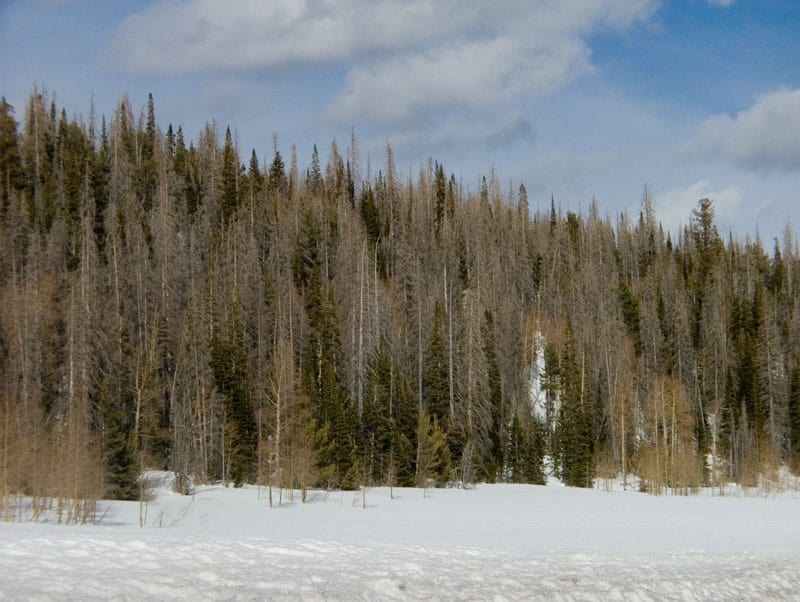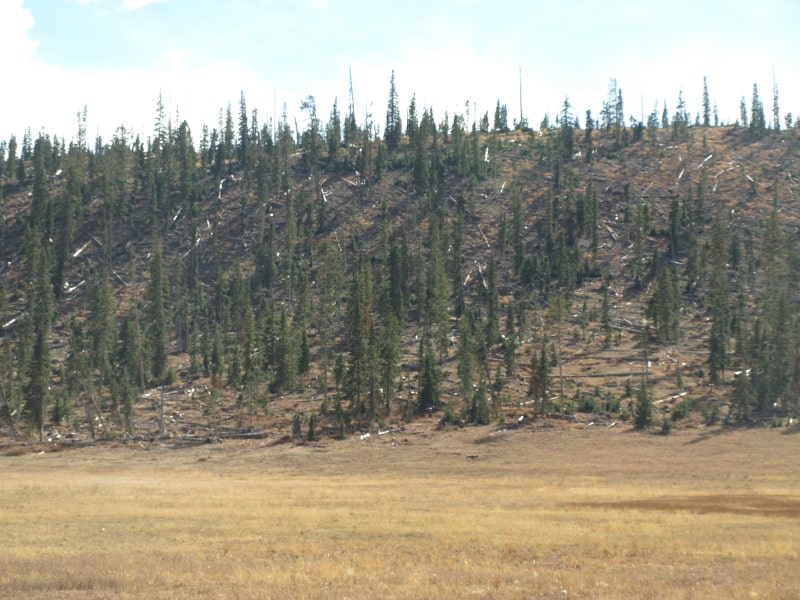
Recently, one of the main the topic of conversation here at NCFP has been about collaborative forest management. We have wandered though several posts and many comments into the controversy surrounding, in particular the Montana Forest Restoration Committee in Montana and the Tongass Futures Roundtable in Alaska. In these discussions, there have been those sitting just beyond the perimeter of a collaboration who feel that something is amiss. Concerns often expressed by local environmental groups include, “Who is at the table, collaborating, and who is absent?” That is, Is the committee biased? If so, what type bias? On the other side of this divide are those who champion collaboration, particularly some National environmental groups who seem tired of litigation battles and stalemate, and to prefer more direct forms of engagement. These would-be collaborators don’t seem too uncomfortable with the make-up of collaboration committees. Because they are well-represented?. Sometimes they look askance at those who challenge the validity of specific collaborations, even accusing local environmental groups of being obstructionists. Local environmental groups counter, and accuse the Nationals of “selling out,” becoming part of the problem that is often labeled “Washington D.C.”
As I’ve watched and participated in surrounding discussion, I’ve wondered: Whither FACA? The Federal Advisory Committee Act FACA) was passed in 1972 in an effort to reign in federal agency ‘capture’ by special interest groups, particularly corporate interests. By the late 1990s there was substantial interest in collaboration in natural resource policy, but FACA was seen by many as a barrier to effective collaboration: Too bureaucratic, too heavily-laden with process requirements. But collaborators seem to have forgotten, else never understood a little facet of the law: an advisory committee doesn’t need to be declared to be a FACA Committee to be held accountable to at least some aspects of FACA law.
A good overview of this FACA problem/opportunity can be found in “The Federal Advisory Committee Act and Public Participation”, 1999 (pdf) publication by Resources for the Future. The act itself can be found here. Another useful reference is “The Federal Advisory Committee Act and Its Failure to Work Effectively in the Environmental Context”, (pdf) 1995, Boston College Environmental Affairs Law Review. After reading the latter, I was about to give up on FACA, in part because the courts had failed pretty much to allow people to challenge federal agencies under FACA. And the prevalence of closed-to-the-public advisory committees was still substantial in 1993:
FACA has … failed to fulfill Congress’s goal of opening all advisory committee meetings to the public. Closed-door advisory committee meetings still prevail, despite FACA’s mandates that meetings be open to public participation.218 The GSA, which monitors advisory committee activity throughout the government, reported that, in fiscal year 1993, there were more closed and partially closed advisory committee meetings (2,225) than open meetings (2,162).219 It is clear from these statistics that a substantial amount of advisory committee work is still done in private, away from the public scrutiny and participation that would help limit the influence private interest groups have on the agencies they are advising.
In short it looked like those finding themselves on the outside of collaboratives couldn’t find much recourse via the courts. Then I found an interesting little decision (pdf) rendered after the Idaho Wool Growers Association successfully challenged the Forest Service in Idaho, 2009. In Judge Winmill’s decision I saw a ray of hope that indeed FACA challenges might still reign-in committees that bias agency decision-making. In particular I found this interesting:
Memorandum Decision and Order – Page 18
FACA defines an “advisory committee” as “any committee, board, commission, council, conference, panel, task force, or other similar group, or any subcommittee or other subgroup thereof . . . which is . . . established or utilized by one or more agencies in the interest of obtaining advice or recommendations for the President or one or more agencies or officers of the Federal Government . . . .”
Memorandum Decision and Order – Page 19-20
“When a committee is established to provide expert summaries or interpretation of technical data, their reports can be ‘in the interest of obtaining advice or recommendations for . . . one or more agencies.’” . . .
“Even though [the committee] provided the USFS with only narrative summaries of scientific information, and made no policy recommendations, the [committee] drafts and the final assessment provide the framework, context and information that the USFS will rely on in making policy decisions.”
Memorandum Decision and Order – Page 20
FACA imposes a number of requirements on advisory committees. See, e.g., 5 U.S.C. App. II, §§ 2, 5, 9-14 (records must be made available for public inspection; charter must be filed; upcoming meetings must be announced; meetings must be held in a public place; minutes must be kept; attendance must “be fairly balanced in terms of the points of view represented” and may “not be inappropriately influenced by the appointing authority or by any special interest”). Typically, a close examination of each requirement, contrasted against the circumstances in a particular case, is warranted when determining whether a FACA violation occurred.
So FACA may indeed be ‘in play’ in broader contexts than have heretofore been considered by many. That is, it matters not so much that FACA committees be chartered by agencies. What matters is what the players do, how they deal with the public interest and how they vet various interests/positions. Post Judge Winmill’s decision, it looks like the courts may finally be listening. Or not! If the courts are listening, we may be in for more FACA lawsuits to test these waters.
What does it all mean? How does and agency, say the US Forest Service, go about getting workable committees (defacto FACA committees) that can come to any agreement or give advice that is not all over the map?
I think that the answer lies in an area that the Forest Service is so far loathe to go. That area is the area of multi-scale adaptive governance that includes policy development as well as program and project management. The Forest Service seems to want to hold policy development to itself, yet to collaborate on site-specific watershed projects. That type arrangement gives no space to deliberate upon and enact the type preservation sought by John Muir naturalists, who want intact ecosystems for say, wildlife—big home ranges for large carnivores, protected corridors for migration, etc. So the whole idea of local-only collaboration is a nonstarter to many environmentalists.They want to deal with matters of broader scale and scope. But there is no such forum available in the 2012 NFMA rule. At least that’s the way I see it. No wonder environmentalists cry fowl. When will the Forest Service warm up to adaptive governance, with its emphasis on collaboration and adaptive management? Not likely anytime soon. So, for this and other reasons, we’ll just see what shakes out in FACA court room battles. When dealing with extant collaboratives, we are left to wonder: What the FACA? Or maybe just WTF?
Perhaps the answer, or part of it, has already been offered up in a NCFP comment from Terry Seyden, if only ALL would/could operate in good faith and keep the public interest in mind:
In my view, there is just no substitute for ongoing substantive dialogue to help the agency truly understand what the real underlying interests of various constituents are. Having a rich two way dialogue also assists the agency in creatively exploring all available options for meeting agency goals while trying to meet sometimes competing interests. … [T]o be legitimate and effective, any collaborative effort has to be well grounded within a larger public involvement strategy that gives the larger community of interests substantive opportunity to comment on and influence collaborative recommendations BEFORE decisions are reached.
Of course for any of this to work, the process has to be seen as credible and fair, both in terms of who directly participates in a collaborative group and how those “not at the table” have meaningful opportunities to contribute before decisions are made. While good faith among all interests is not a requirement for this approach to be successful, good faith on the part of the Forest Service or other third party convening any collaborative effort is absolutely essential.
This is echoed by An Optimist:
A good process… will seek to represent the ideas or interests of even non-participating groups. The challenge, however, is that a collaborative process is a learning process ….
In a Michigan Law Review article, Daniel Walters (pdf) seems to agree with both. He advocates for a “deliberative approach” to FACA. It all sounds right to me.
The challenge, for all of us is to be ever-vigilant to ensure that ‘collaboratives’ are indeed operating in good faith, and in the public interest. But if the many of the comments in the posts linked just below are an indicator, many such collaboratives in the past may not have been acting in good faith and in the public interest. Also the Forest Service needs to make sure that collaborative fora are available at appropriate scale to deal with relevant issues—not just at the local level. So let’s keep talking, keep challenging emergent collaboratives and broader policy both in terms of resource-related policy, programs and projects and in terms of collaboration design and operation. And let’s talk here about what I missed, what I messed up, and so on re: FACA, collaboration, and US Forest Service policy and planning.
Some related NCFP collaboration posts of interest:
Odd bedfellows try collaborating to resolve conflicts- from E&E News, March 15, 2012
“Collaboration on natural resource management is divide and conquer” The Wildlife News, March 11, 2012
New Research: Who Litigates, Who Collaborates and Why?, March 7, 2012
Two Views of the Tester Bill, December 22, 2011
Collaboration Can’t Fix What Ails Public Forest Management, October 6, 2011
Colt Summit- Garrity EditorialOctober 6, 2011



